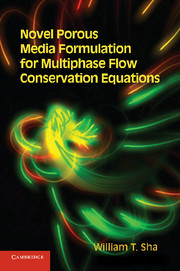Book contents
- Frontmatter
- Contents
- Figures and Table
- Foreword
- Foreword
- Foreword
- Nomenclature
- Preface
- Acknowledgments
- 1 Introduction
- 2 Averaging relations
- 3 Phasic conservation equations and interfacial balance equations
- 4 Local volume-averaged conservation equations and interfacial balance equations
- 5 Time averaging of local volume-averaged conservation equations or time-volume-averaged conservation equations and interfacial balance equations
- 6 Time averaging in relation to local volume averaging and time-volume averaging versus volume-time averaging
- 7 Novel porous media formulation for single phase and single phase with multicomponent applications
- 8 Discussion and concluding remarks
- Appendix A
- Appendix B
- Appendix C
- Appendix D
- References
- Index
6 - Time averaging in relation to local volume averaging and time-volume averaging versus volume-time averaging
Published online by Cambridge University Press: 07 October 2011
- Frontmatter
- Contents
- Figures and Table
- Foreword
- Foreword
- Foreword
- Nomenclature
- Preface
- Acknowledgments
- 1 Introduction
- 2 Averaging relations
- 3 Phasic conservation equations and interfacial balance equations
- 4 Local volume-averaged conservation equations and interfacial balance equations
- 5 Time averaging of local volume-averaged conservation equations or time-volume-averaged conservation equations and interfacial balance equations
- 6 Time averaging in relation to local volume averaging and time-volume averaging versus volume-time averaging
- 7 Novel porous media formulation for single phase and single phase with multicomponent applications
- 8 Discussion and concluding remarks
- Appendix A
- Appendix B
- Appendix C
- Appendix D
- References
- Index
Summary
In this chapter, we discuss (1) time averaging in relation to local volume averaging and (2) proper order of time-volume averaging versus volume-time averaging.
Time averaging in relation to local volume averaging
The averaging procedure in multiphase mechanics must be related and can be understood by considering the basis of experimental observation. The relative magnitudes of three quantities determine the method and meaning of averaging. They are the size of the dispersed phase, the spacing between the elements of the dispersed phase, and the volume observed. When applied to a two-phase boiling system, they become the size of bubbles, the mean spacing between bubbles, and the size of observation “window” (or any probe of finite size). For a one-dimensional system, these quantities are bubble size D, bubble spacing S, and observation window or slit width L.
- Type
- Chapter
- Information
- Publisher: Cambridge University PressPrint publication year: 2011

